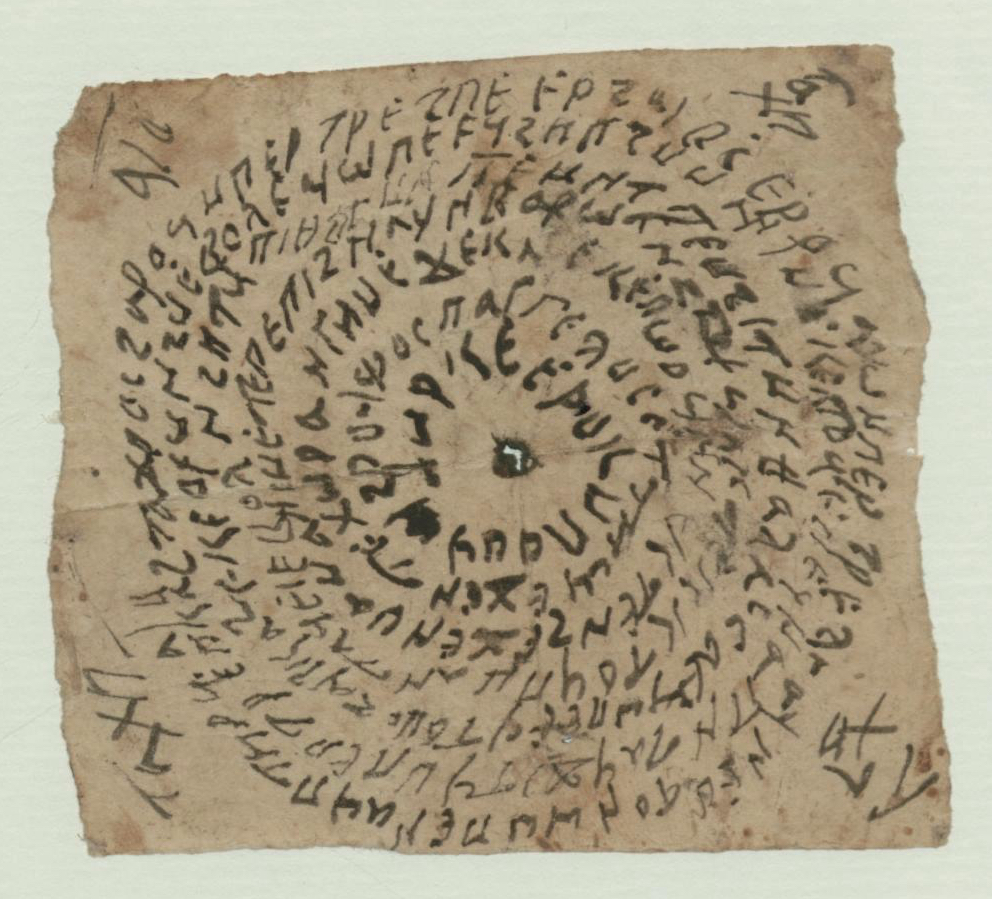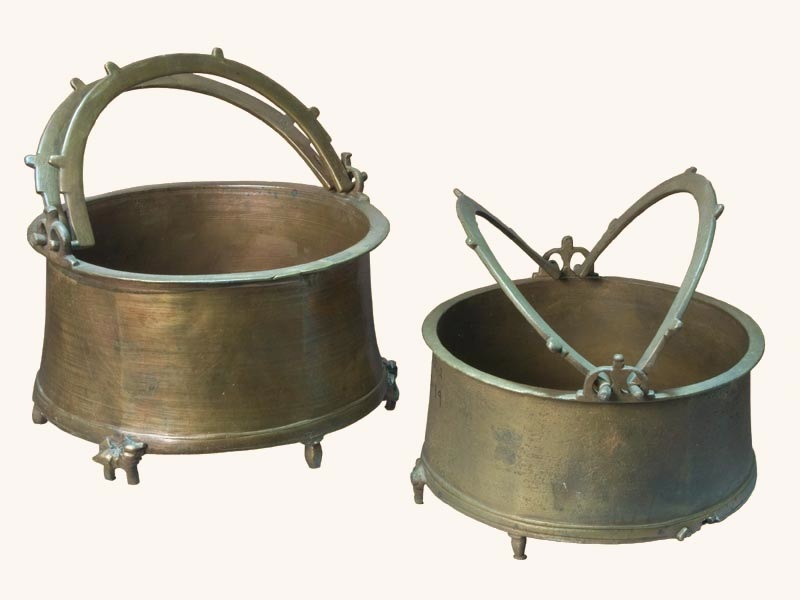This week’s post takes a deep dive into one example of a curse from Kyprianos, our database of Coptic magical texts: Vienna, Nationalbibliothek K 08304 Pap is a sheet of paper that is roughly square, measuring 7.3cm by 7cm. This square appears to have been folded once horizontally and once vertically, producing a smaller package of 3.6 by 3.5cm. First published by Viktor Stegemann in 1934, who dated the handwriting on this sheet of paper to the 10th or 11th century CE, a translation of this curse appeared more recently in the collection of translations of Coptic Texts of Ritual Power by Marvin Meyer and Richard Smith, where it was translated by Marvin Meyer.

The principal work of our project is to produce new editions of all the known magical texts written in Coptic. This requires us to consult the original manuscripts themselves, or, in cases where the originals cannot be seen by our own eyes, from photographs of the original papyri, parchment, paper, or ostraca. To edit a text means to produce a transcription of the Coptic script into Coptic Unicode script, the script which can be used universally across platforms, a translation of the text, and a commentary explaining any of the difficulties in the text, or any difficulties we’ve had with reading the text. By comparing these new editions with earlier ones, we can correct any mistakes that were present in, or add any further information that was missing from, our understanding of the manuscript itself and/or the text upon it.
The most visually striking aspect of this particular text is that it has been written in one very long line that winds its way from the centre of the sheet to the outer edge of the sheet. That is to say, the beginning of the text starts in the middle, and circles outwards in concentric rings until the end of the text is reached. To complete the framing of the composition, in the top right-hand corner of the sheet of paper the exclamation “Yea!” (ⲁⲓⲟ) is written, and in the other three corners “Quickly!” (ⲧⲁⲭⲏ).

The reason that the text has been inscribed in this remarkable format is made immediately clear from the text itself. The curse invokes Rouphos, an angel who has been appointed to preside over the land of Egypt, to spread his wings over each and every place in the country until he has located where the bronze vessel is. Not only this, but that he is to ensure that whoever stole the vessel brings it back! The text therefore allows us to imagine that a client commissioned this practice because they had had a bronze vessel stolen from them. The writing of the text in concentric rings therefore mimics the shape of the inside of such a vessel – more specifically, the shape of a bowl! A bronze vessel would, we can assume, have been an expensive or at least a not cheap, possession to have stolen from you, and certainly enough so that someone would want to invest in cursing the individual who stole it from them in the hope that it would be returned!
I adjure you today, O Rouphos, the angel who is appointed over the land of Egypt, that you spread your wings over every place in which this bronze vessel is, until it returns to the place from which it came, the east and the west, the north and the sea.
If it is buried underground, you shall reveal it! If it is hidden in a sealed place, you shall return it to this place! As for he who has taken it, do not let the earth be firm under him! Do not let the sky shelter him, and do not let him have any peace at all! Yea! Yea! Quickly! Quickly! Quickly!
The text goes on to specify that Rouphos will reveal the vessel even if it has been hidden by burial or hidden in a “sealed place”, i.e. locked away. No matter where or how well it has been hidden, Rouphos is commanded to “return it to this place”. “This place” may well have been where the bronze vessel was stolen from, or indeed where the folded package of paper was deposited – if these two places were not one and the same. We can imagine that the client may have returned to the place in which the paper package was deposited, in the hope one day of seeing the vessel returned to that place.

But if this were all that the client was after, we would not be justified in calling this practice a “curse”. Rouphos is not only commanded to locate the vessel, its thief, and have the vessel returned by the thief, he is also commanded to make the earth unstable under the thief, not to let the sky shelter him, and not to let him have any peace. This tripartite set of curses produces an image of the thief’s world falling apart around him, with the earth threatening to swallow him up or collapse beneath him, the sky to come crashing down, and for him to be unable to find any peace in his life. This concept of peace in Coptic terminology, comparable to the idea of “happiness” in modern terminology, has been recently discussed by Korshi Dosoo (2019). Even if, then, the client does not hope for any justice in the worldly sphere, where the thief would perhaps be tried for his crime, divine retribution will nonetheless be brought down upon him!
This short text is, then, a fascinating example of the now more than 500 manuscripts, inscribed with many more texts (!), that we have to edit as part of our project. From the tantalising glimpses that this corpus of Coptic magical texts provides, we are (re)discovering every day the stories of the trials and tribulations of individuals from their lives centuries ago, and we will aim to continue to share these stories with you in this series of posts in future.
References and Further Reading
Meyer, Marvin W., and Richard Smith. Ancient Christian Magic: Coptic Texts of Ritual Power. Princeton (New Jersey): Princeton University Press, 1999.
Stegemann, Viktor. Die koptischen Zaubertexte der Sammlung Papyrus Erzherzog Rainer in Wien. Sitzungsberichte der Heidelberger Akademie der Wissenschaften. Philosophisch-historische Klasse, 1933-34 n°1. Heidelberg: Carl Winters Universitätsbuchhandlung, 1934. URL
For the Coptic Terminology of Peace, see:
K. Dosoo, “The Coptic Terminology of Peace”, dans Les mots pour dire la paix dans le Proche-Orient antique et médiéval. Analyses lexicales, sur le site de recherche Les mots de la paix/Terminology of Peace [en ligne], mis en ligne le 1/6/2017, consulté le 09/10/2019
